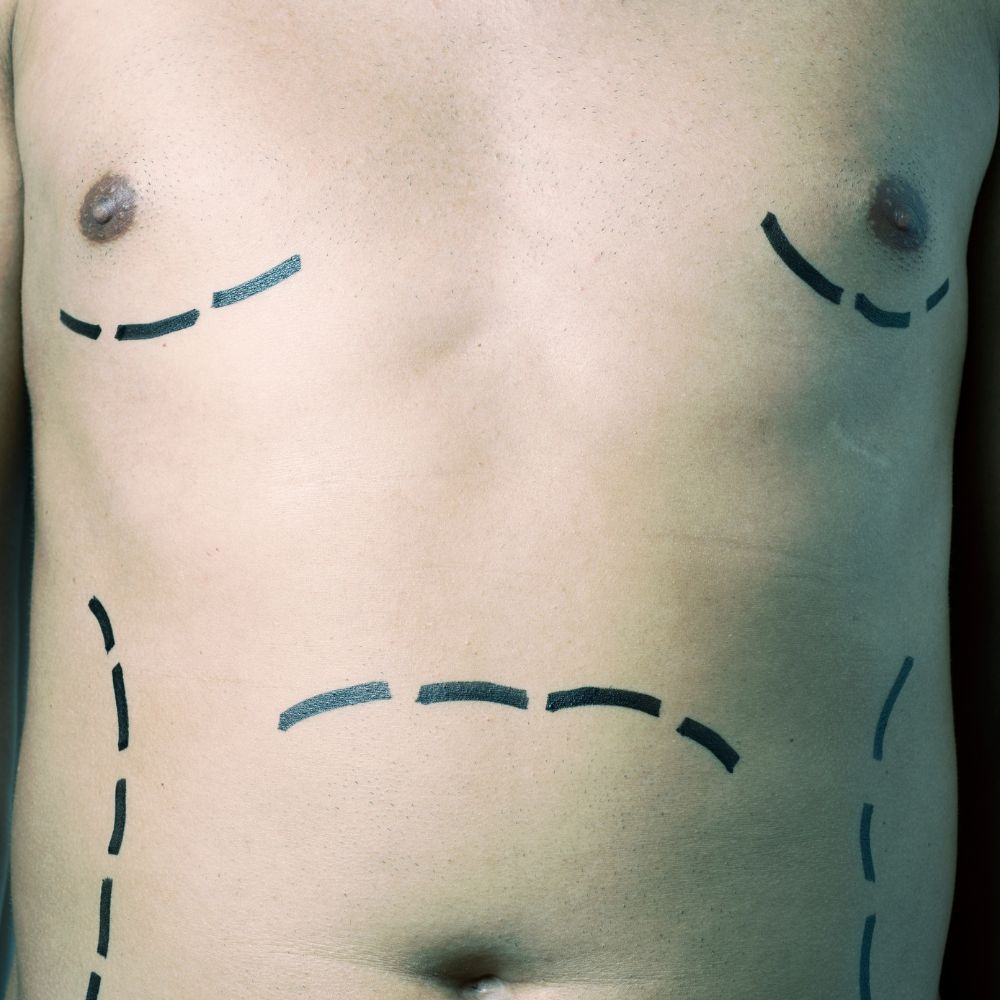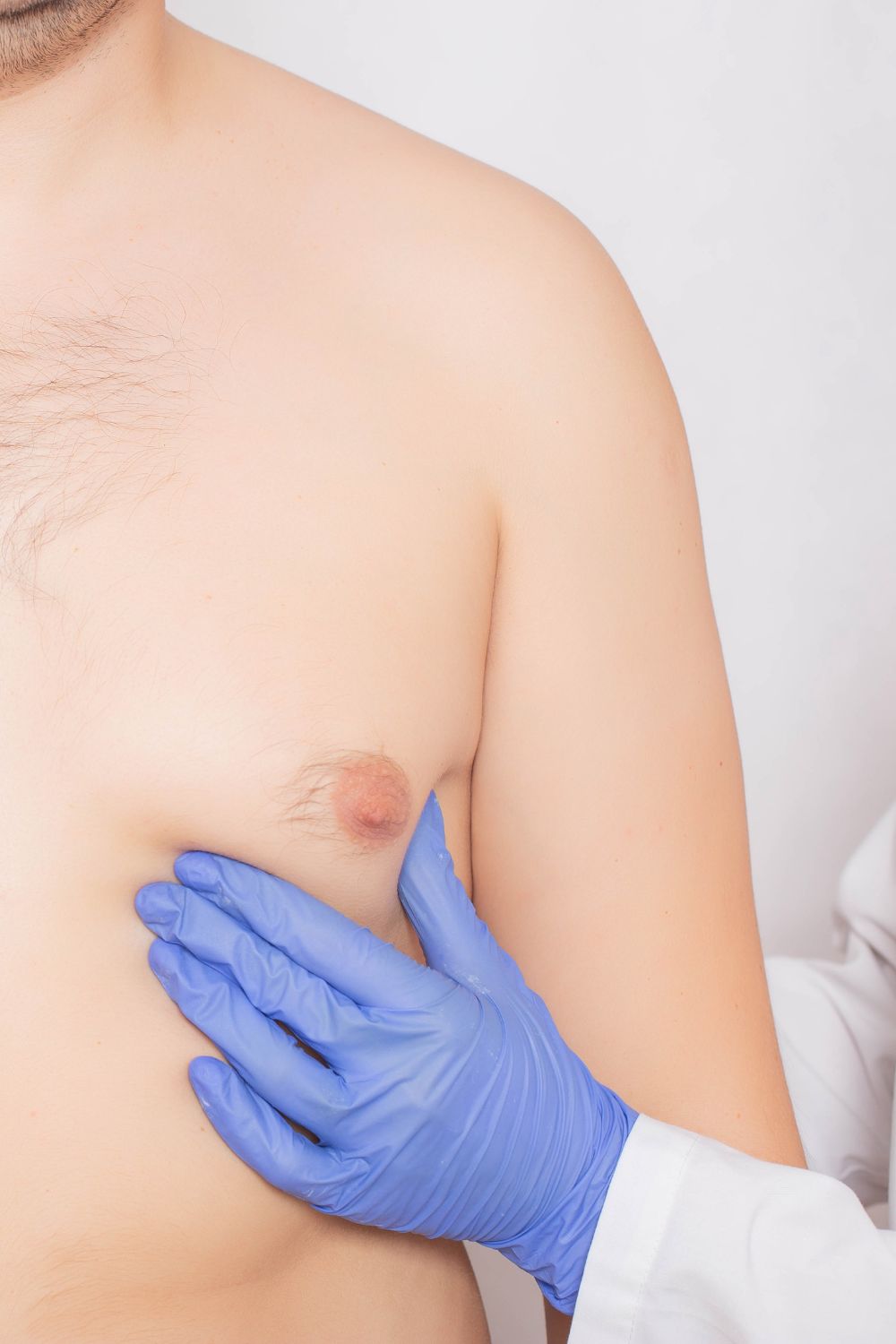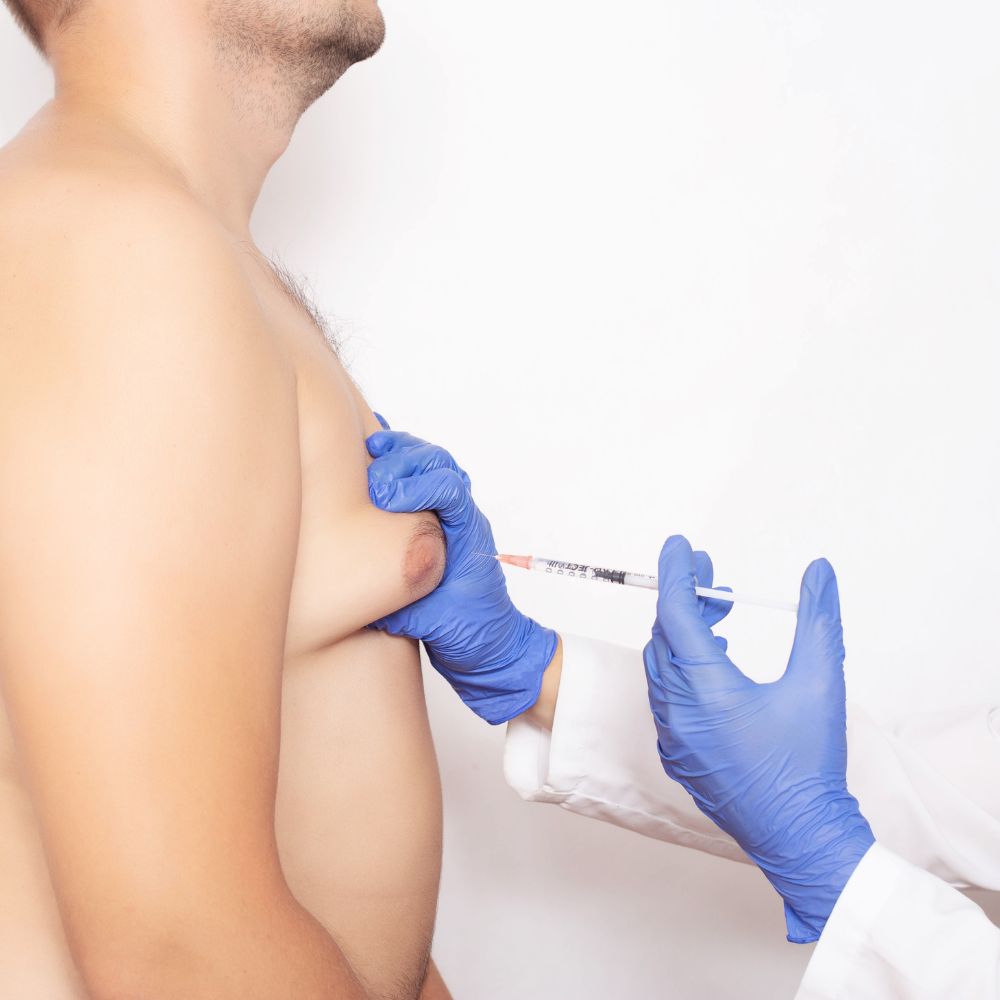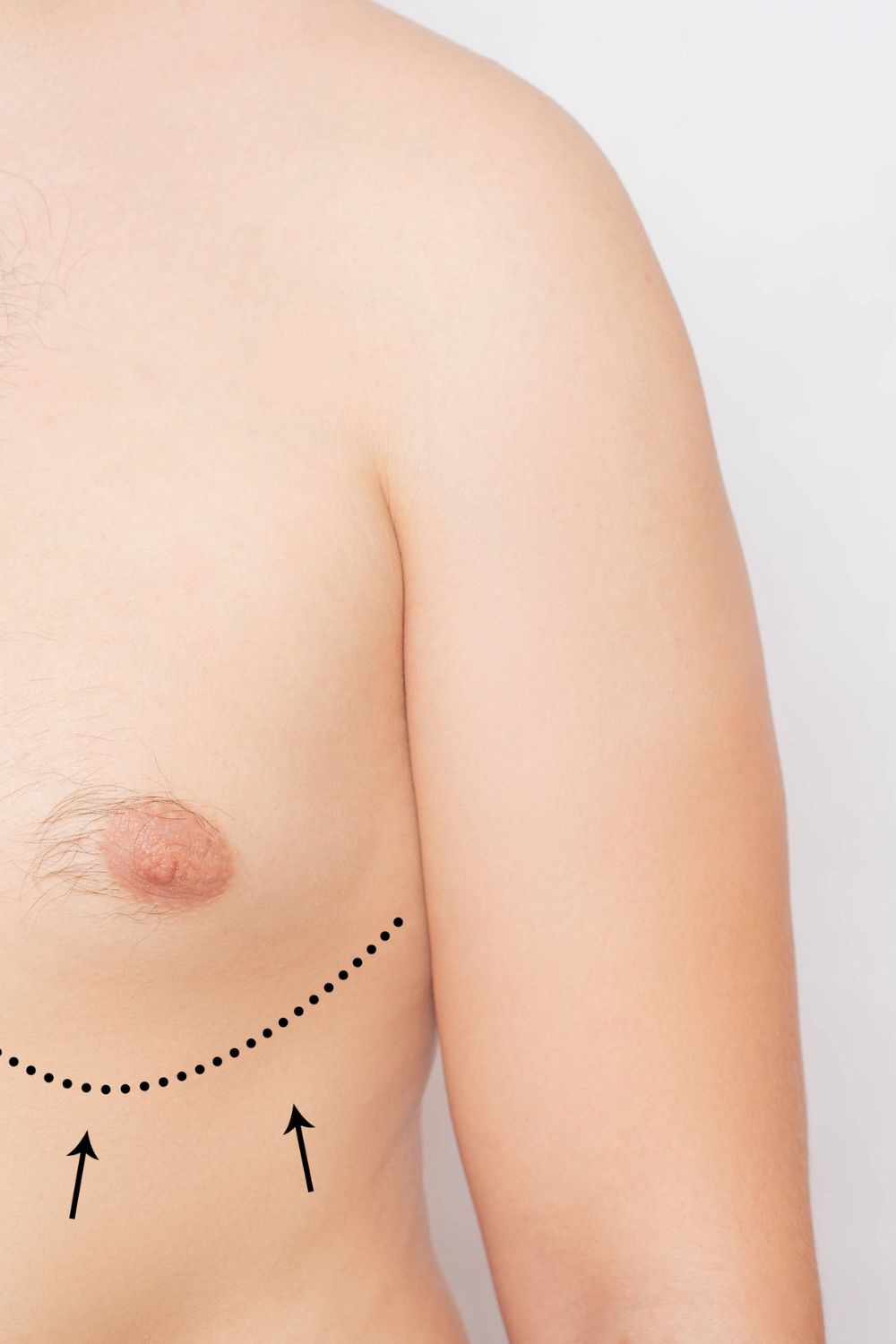Male Gynecomastia
Gynecomastia is a common condition which causes men to have over-developed or enlarged breasts. Each case is unique and the underlying cause of gynecomastia may vary, but it is typically caused by hormonal changes, hereditary conditions, disease or else is a symptom of specific medication. Yet, whatever the cause, gynecomastia is usually the cause of severe emotional discomfort and impaired self-confidence in many males. In fact, some men may even find themselves avoiding particular physical activities or intimacies simply to hide their condition.
Thankfully, reduction mammaplasty is a surgical procedure that can provide a permanent solution for this condition. This treatment is specifically designed to correct the appearance of enlarged breasts in men whilst also helping them to feel comfortable in their own skin once again.
Due to the nature of the procedure, a consultation is required for personalised quotes
Proven Success
Add Your Heading Text Here
Lorem ipsum dolor sit amet, consectetur adipiscing elit. Ut elit tellus, luctus nec ullamcorper mattis, pulvinar dapibus leo.
Typical Uses
When Gynecomastia occurs, reduction mammaplasty is a viable choice. This procedure:
- reduces the appearance of enlarged breasts in men.
- Increases self-confidence
- Develops a more masculine physique
Whilst this cosmetic procedure offers many benefits, opting for Gynecomastia surgery is a highly personal decision and you should only do it for yourself, and never to fulfill someone else’s desires or to try to fit into any sort of ideal image. Nevertheless, this procedure can help to improve your overall appearance by providing you with a more masculine physique and equipping you with renewed self-confidence.




What It Entails
As each procedure is tailored to fit the patient’s individual needs, the precise procedural steps will necessarily vary according to the nature and the extent of the surgery required. However, generally gynecomastia will seek to remove excess fat and skin tissue from the breast using a combination of liposuction and excision techniques. When necessary, the surgeon may be required to reduce the size of the aereola and re-position the nipple to achieve a more natural appearance.
How It Works
1.During the consultation
If you are interested in getting gynecomastia surgery, you should start by booking a consultation with our plastic surgeon. During the consultation, you will be able to express what you hope to gain from this surgery and, after reviewing your medical history, our doctor will be able to determine whether you are eligible to undergo this type of procedure. If you are a viable candidate, our doctor will outline the best course of treatment to ensure that you achieve optimal results.
2.During the procedure
During the surgical procedure, a general anaesthetic is administered to ensure your comfort throughout. Once the anaesthesia has taken effect, our plastic surgeon will proceed according to each patient’s individual needs. In some cases, where gynecomastia is primarily the result of excess fatty tissue, liposuction techniques alone may be used. This requires inserting a thin hollow tube called a cannula, through several small and discrete incisions, which is then moved back and forth in a controlled motion to loosen the excess fat. This fat is then suitably removed from the body by vacuum suction.
3.After the treatment
After the surgery, dressings or bandages will be applied to your incisions and an elastic bandage or support garment may be used to minimise any swelling, as well as to support your new chest contour whilst it heals. Additionally, a small, thin tube may be temporarily placed under the skin to drain any excess blood or fluid that may collect.
How It Works
If you are interested in getting gynecomastia surgery, you should start by booking a consultation with our plastic surgeon. During the consultation, you will be able to express what you hope to gain from this surgery and, after reviewing your medical history, our doctor will be able to determine whether you are eligible to undergo this type of procedure. If you are a viable candidate, our doctor will outline the best course of treatment to ensure that you achieve optimal results. Prior to the surgery, you may be asked to get a medical evaluation, take certain medications or adjust your current medications, refrain from smoking and avoid ingesting drugs that may increase bleeding.
During the surgical procedure, a general anaesthetic is administered to ensure your comfort throughout. Once the anaesthesia has taken effect, our plastic surgeon will proceed according to each patient’s individual needs. In some cases, where gynecomastia is primarily the result of excess fatty tissue, liposuction techniques alone may be used. This requires inserting a thin hollow tube called a cannula, through several small and discrete incisions, which is then moved back and forth in a controlled motion to loosen the excess fat. This fat is then suitably removed from the body by vacuum suction. On the other hand, excision techniques are recommended where glandular breast tissue or excess skin must be removed to correct gynecomastia, and this is necessary if the areola must be reduced, or the nipple repositioned to a more natural male contour.
Post-surgery, the results of gynecomastia surgery are permanent in most cases, providing you maintain a stable weight and refrain from ingesting any substances that had caused the condition in the first place. As incisions are a necessary part of this procedure, all scars are permanent, even though some scars may be concealed in the natural contours of the breast. Nevertheless, your improved upper body will likely enhance your self-image and confidence, whether in a shirt and tie, a t-shirt, or baring your chest at the beach.
Frequently Asked Questions
As with any procedure, side effects may occur, and the risks and potential complications will be discussed in detail during the initial consultation. Possible risks may include:
- Unfavourable scarring
- Bleeding (hematoma)
- Blood clots
- Infection
- Poor wound healing
- Changes in nipple or breast sensation may be temporary or permanent
- If liposuction is used, additional risks include uneven contours, rippling or loose skin, irregular pigmentation, excessive fluid loss or fluid accumulation
- Anesthesia risks
- Breast contour and shape irregularities
- Skin discolouration, permanent pigmentation changes, swelling and bruising
- Damage to deeper structures – such as nerves, blood vessels, muscles and lungs – can occur and may be temporary or permanent
- Allergies to tape, suture materials, glues, blood products, topical preparations
- Breast asymmetry
- Fatty tissue found deep in the skin might die (fat necrosis)
- Fluid accumulation
- Deep vein thrombosis, cardiac and pulmonary complications
- Pain, which may persist
- Possibility of revisional surgery.
Surgery to correct gynecomastia may be performed on an outpatient basis, in an office-based or ambulatory surgical facility, or a hospital setting. It may be performed under general anesthesia or local anesthesia with sedation. These decisions will be based on the requirements of your specific procedure and in consideration of your prefer-ence and your doctor’s best judgment. Your plastic surgeon and the assisting staff will fully attend to your comfort and safety.
Post-surgery, the results of gynecomastia surgery are permanent in most cases, providing you maintain a stable weight and refrain from ingesting any substances that had caused the condition in the first place. As incisions are a necessary part of this procedure, all scars are permanent, even though some scars may be concealed in the natural contours of the breast. Nevertheless, your improved upper body will likely enhance your self-image and confidence whether in a shirt and tie, a t-shirt, or baring your chest at the beach.


Follow-Up Procedures
After getting gynecomastia surgery, follow up sessions may be needed to monitor your recovery. In some situations, it may not be possible to achieve optimal results with a single surgical procedure and another surgery may be necessary.
- To perform additional tightening or repositioning of the breasts
- To treat any complications that may occur


